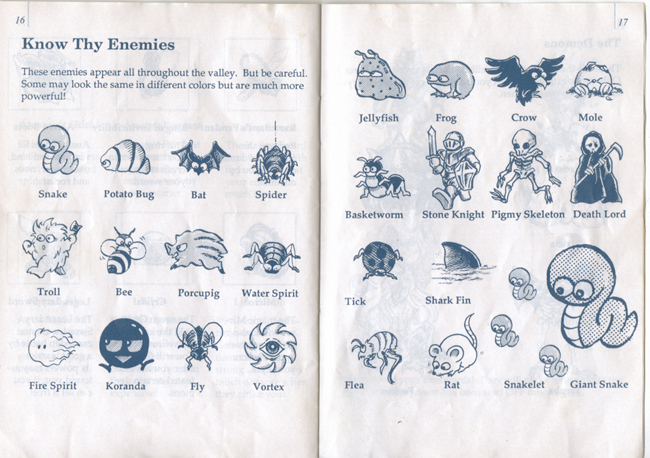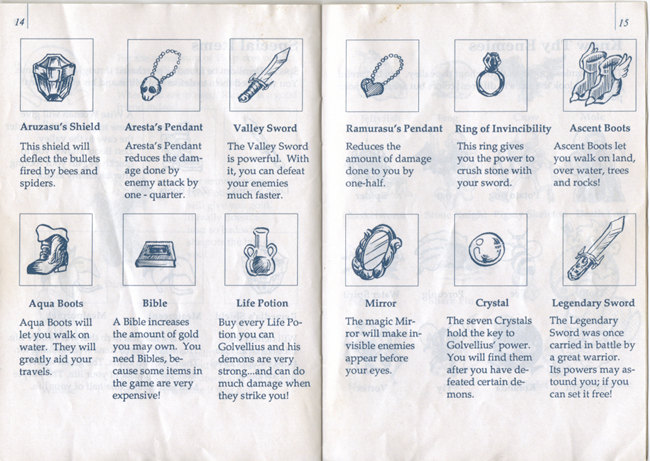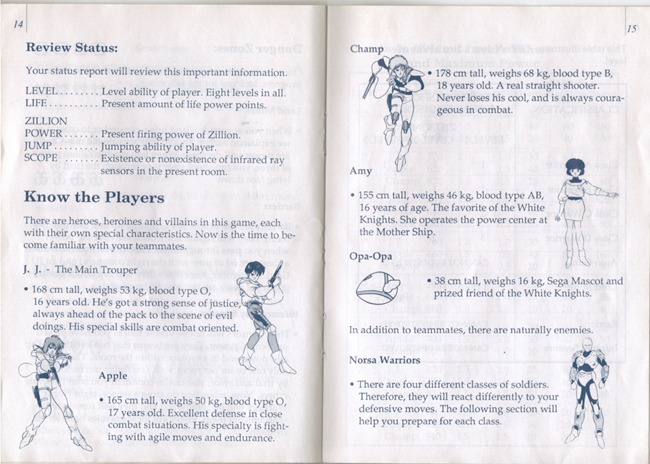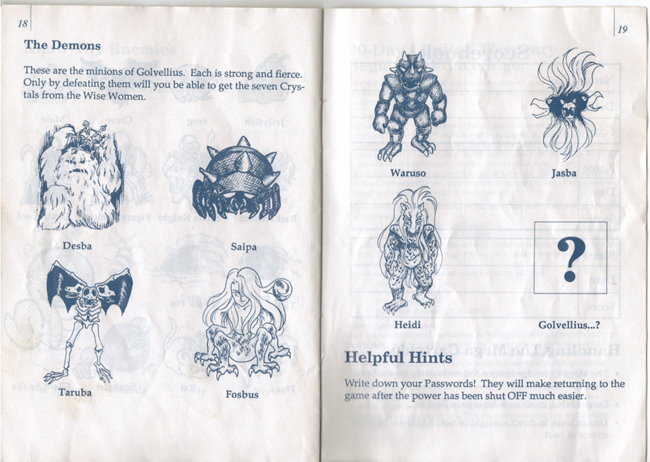15 September 2012
By Paul DeMarte
I recently uncovered a couple Sega Master System instruction manuals I had boxed up. I flipped through the now tattered booklets, and I reminisced about the many times I had intently examined them. My focus rarely, if ever, was on the actual controls of the games. I mean, really, the controllers had a directional pad and two buttons! The pause button was on the actual console! I was sure I could figure it out, and I wanted to play—no time for instructions! But, I did read through the synopses, and I did adoringly gaze at the artwork.

Sega had some serious hits and misses with their box art in the days of the SMS. Honestly, I thought the plastic boxes themselves were quite nifty; they weren’t easily destroyed as Nintendo’s cardboard boxes were. Some of the box art contained a few colors, at most, and blocky art or actual photos—admittedly, there was some decent art here and there, but there seemed to be little to no consistency. Yet every now and then one would find a treasure trove of art within the instruction booklets. I was reminded of this as I, once again, perused the manuals for Golvellius: Valley of Doom and Zillion.
Developers like Atari and Konami really had their acts together with hiring great artists for their box art. Although Sega struggled with box art, on occasion they excelled artistically with the visuals in games' instructions.
Why should anyone care about any of this? I am going to attempt to inform you.
The evolution of video games (as any gamer knows) is incredible. What I’m seeing now is what I once dreamed of as a kid. Well, I also imagined there would be virtual reality rooms or holograms and perhaps jetpacks and/or hoverboards, but the graphics and sound of games today are brilliant—at least they can be. But back in the 16-bit and (especially) the 8-bit eras the amazing art in the instruction booklets (I now once again observed) served as the bridge between gameplay and a player’s imagination.

While flipping through the instructions of Golvellius, I scanned the drawings of characters, enemies and items. The bridge here is the design of what is drawn and how I remember playing these games. I thought of the drawings as I played. I didn’t play a game with just the game on the screen—I played them connecting the art to the screen. Similar to reading a graphic novel, going scene to scene, frame to frame, my mind would populate the sparse pixels with infinitely more detail, enhancing the visuals of a game. I remembered them differently; I thought of them differently. I also knew the perils that the characters faced from the lore written and overviews provided in the instructions, even if within the game detailed plots were only briefly explained.
Not only did these visuals in game manuals enhance gameplay, they also introduced new styles of art to me and, probably, many other Americans at the time. Zillion (although only containing a few images within the instructions) has original drawings on par with animé released during that time. Its design was similar to the Robotech series, with sleek lines and wide-eyed characters. It was new and cool.

These designs and storylines inspired me. I remember taking these booklets to school and then imitating the drawings and stories. It, in a strange way, was genius in the marketing department. I would think of a game even while not playing it. Gaming meant more than just playing—time away from the actual game meant reflecting on the games themselves and creating my own games and worlds through my own imagination. These characters were now able to go on side adventures within fan sketches and fiction—my own drawings and stories! These booklets represented little keepsakes to prolong my entertainment and to keep my creative juices flowing.
Today, there seems little to no need for original artwork in instructions, and spoken word in gameplay often explains the entire plot. Nevertheless, I do miss real instruction booklets. I wonder how many game designers honed their skills at creating their own original games based off of instruction art and printed fairytale storylines. I wonder why I tend to see the decline of iconic art in these modern instruction booklets. I guess there are few bridges that you need extra help crossing now, given the intensity of modern graphics and sound.

Undoubtedly, there are games out there that have creators priding themselves on original instruction booklet art and astounding written game scenarios. Yet, a game such as The Legend of Zelda Skyward Sword has no original art within the instructions and only highlights the controls and tips for playing—not one phrase worth of a poetic story. In its place, however, you'll find a ton of gameplay screenshots.
I wonder if a lack of art and the loss of expounded storylines (now being gameplay knowledge only) in instructions will become the model for the future. While we have arrived where I once dreamed of with graphics, I have to wonder: does the imagination suffer? I guess in many ways there are new forms of imagination to be had. I do miss my paper companions though.